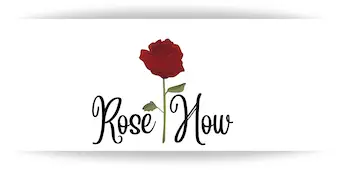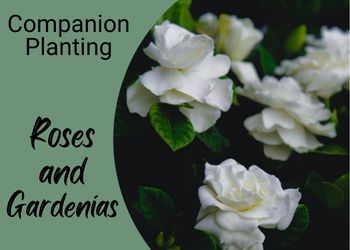Roses and gardenias look good together and can increase the floral embellishment of the garden, but there are one or two challenges with this pair that you will need to keep in mind, but companion planting roses and gardenias can be achieved.
Let’s look at a comparative analysis of both roses and gardenias first. Starting with a quick summary.
Roses and gardenias together can provide eye-catching color options, as well as water and soil compatibilities that can be managed. Be aware of gardenia shade requirements, that gardenias might grow taller than your roses and that they do attract some pests.
Of course, some of these points need clarification and further details so we’ll explore all the aspects of this companion planting pair more below.
Can roses and gardenias be planted together?
Here’s a handy reference table for further quick guidance, then we’ll get into the details.
| Roses | Gardenias | |
|---|---|---|
| Colors | Red, Pink, White, Yellow, Orange, Blue, Purple, Plus color mixes | Mostly White. Also in Red, red, pink, Pale yellow, Splash of Purple |
| Fragrance | Mild to Strong | Medium to Strong |
| Soil Type | Loamy | Organic rich |
| pH Value | 5.0 to 6.5 | 6.5 to 7.0 |
| Ideal Zones | 7 – 10 | 6 to 11 |
| Pests and Pollinators | Minimal pollinators. Attracts aphids | Attracts pollinators but additional pests |
| Height | Differs by variety. Generally 2 – 5 feet | 3 – 6 feet |
| Sun / Shade | Direct sun 6+ hours per day | Morning sun. Full or partial afternoon shade |
| Water Needs | 1 – 2 inches, every 3 – 4 days | Minimum 1 inch, 1-2 times per week |
| Planting space | Ideally 3+ feet | Ideally 3+ feet |
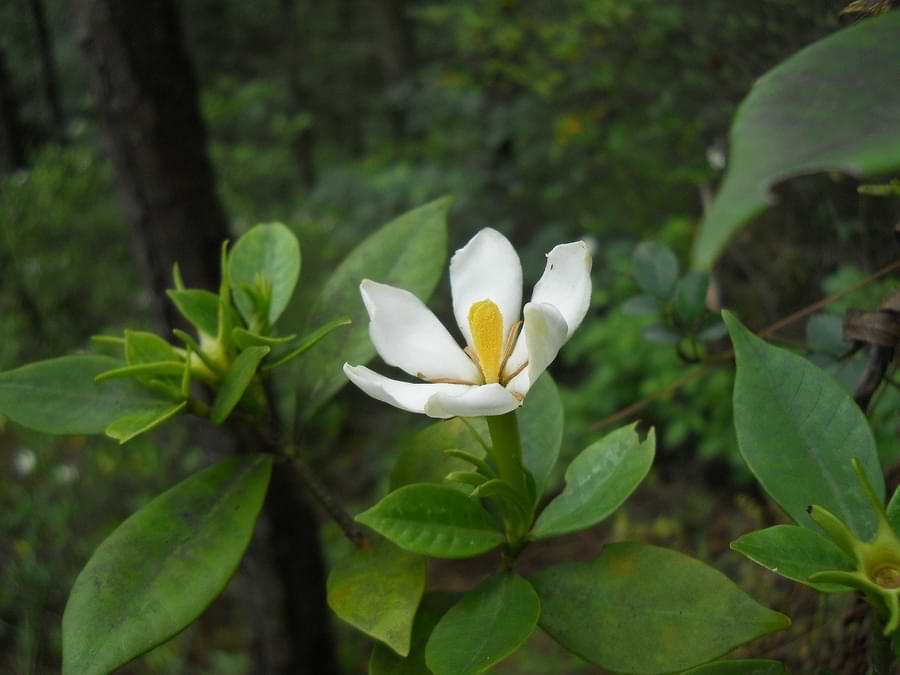
General colors available
Color is the most beneficial flex of roses and gardenias for companion planting.
Roses of course come in a number of different colors, and dual colors for many. Reds, purples, and blues work really well with gardenias for the most striking look.
For a softer-looking country garden, opt for pink roses to create a mild and romantic dreamscape! Or orange roses for a contemporary and bright and warm view.
Gardenia color options
The most popular gardenia by far is the white gardenia “gardenia jasminodes” which look pleasant with their dazzling and abundant white flowers.
Gardenia colors include red, pink, and pale yellow with an optional splash of purple, and of course, that popular and most common ornamental white. Plant white gardenias with other flowers like roses of reds, purples, and blues for a striking look, or softer colors for a romantic or warm scape.
Along with the delicate and beautiful gardenia blooms, comes the sweet perfume fragrance that gardenias bring to your garden
Since it is a shrub, its lush green leafy look …along with white bloomed flowers when combined with roses offers a striking contrast. Probably none more so than red roses in my opinion. The contrast of red roses and white gardenias will catch the viewer’s attention instantly.
Of course, white gardenias and white roses together would also look very effective. Providing a sea of white flowers across your borders.
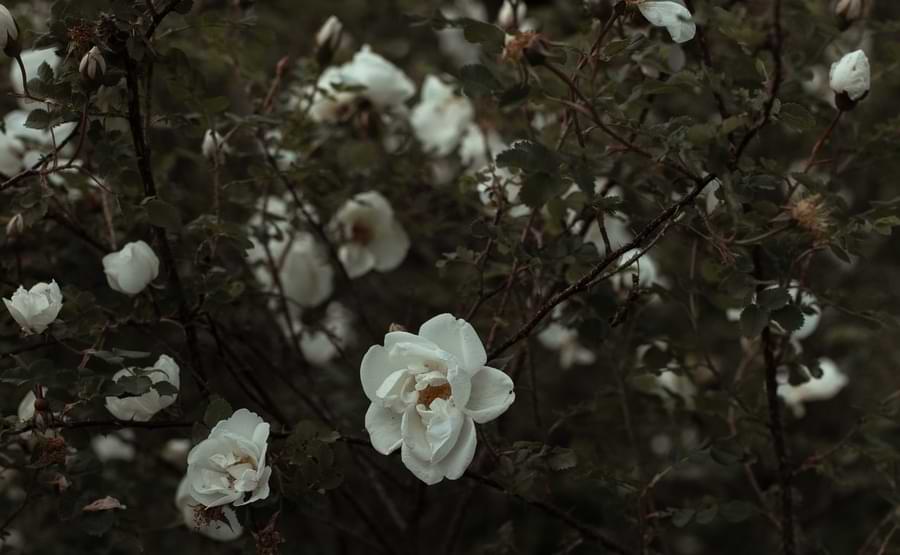
Comparative height
Can roses and gardenias be planted together without clashing in height?
The gardenia flowers have almost 140 species and most of them generally grow from 3 feet to 6 feet in. However, some exceptions can touch the 8 feet mark as well …but these are not generally paired with roses.
They can at a push form a lower border around climbing or rambling roses, but this wouldn’t normally be done. It might help obscure the spindly legs of the roses, but will probably also cover much of the flowering height.
Rose height varies depending on the type of rose, but in general, they grow between 2 – 5 feet. So for the most part, gardenias will be parallel in height to your roses. And some of them might go above and below as well.
However, they are still commonly planted in the same soil bed with the roses …under certain conditions, because of their floral ambiance and appealing visuals. Just see the spacial allowances for best results.
Soil type
Gardenias love to bloom in organically rich soil having a pH value of 5.0 to 6.5. They do not tolerate alkaline soil, however, they can grow well in slightly acid to neutral soil. This pattern of growth is very similar to that of roses.
Roses though prefer loam soil with 6.5 to 7.0 pH. And just like its pair partner gardenias, they can tolerate the slight shift in the pH of the soil towards an acidic medium.
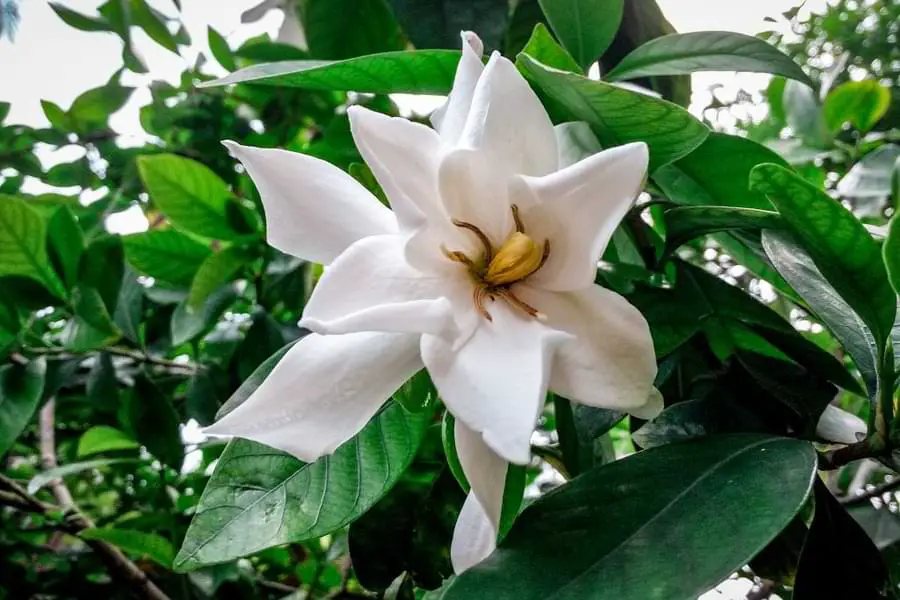
Pest and Pollinators
The strong captivating scent of gardenias is a pleasant addition to the rose scents in your rose bed.
Their scent along with their glowing white flowers can attract bees, birds, and butterflies to encourage pollination. This makes up for the difficulty roses have in attracting pollinators.
Adversely, this scent does not solely attract good insect friends, but can also welcome a number of pests.
Therefore, it can make roses prone to several pest problems – in addition to their aphid attraction!
That’s why, this pair needs proper attention, and pest control treatments. Some pests that gardenias can attract towards the pair are:
USDA hardiness zones
Gardenias are evergreen shrubs and are mostly found in zones 6 to 11. Where zone 6 and 7 mostly contain the newer varieties of gardenias. And 8, 9, 10, and 11 hardiness zones contain the standard species of the gardenia.
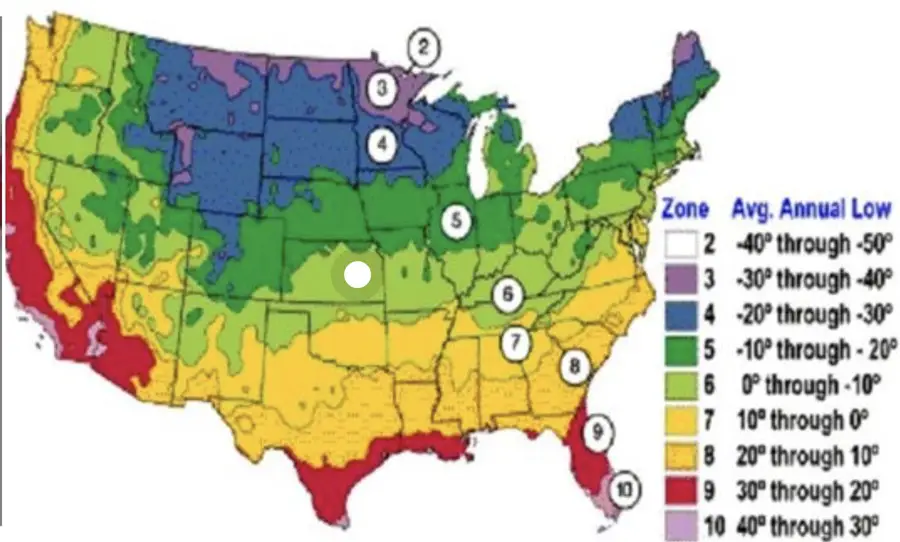
Comparing this to roses, which are ideally suited for zones 7 – 10, means that mostly gardenias and roses will gel completely in at least zones 7 – 9 …as most rose varieties provide the best results in these regions.
Here’s what blooming periods you can expect of roses based on which zone you’re in and for some major cities, states, and countries.
And if it helps, here’s a guide on growing roses in cold climates.
Sun requirements
Roses are sun worshippers and ideally like to soak up six or more hours of direct sun per day. They can tolerate shade, but it will probably mean fewer blooms and a less healthy plant.
Gardenias grow best with warm morning sun, followed by afternoon, or partial shade from the more intense afternoon sun. They can be tolerant, but a combination of sun and shade means gardenias will grow strong stems and optimum blooms, without withering the flowers in the heat.
Watering Needs
Roses and gardenias are similar when it comes to water requirements. Roses need an inch or two every 2-4 days in warm weather. Similarly, gardenias like at least an inch of water 1-2 times per week. Both like surface mulch to maintain moisture, and both also don’t like to get completely dry.
Just perhaps make sure you add a little more water around your roses than you would your gardenias to help get the balance right. Also, here’s when to water your roses! And also, watering roses in hot weather.
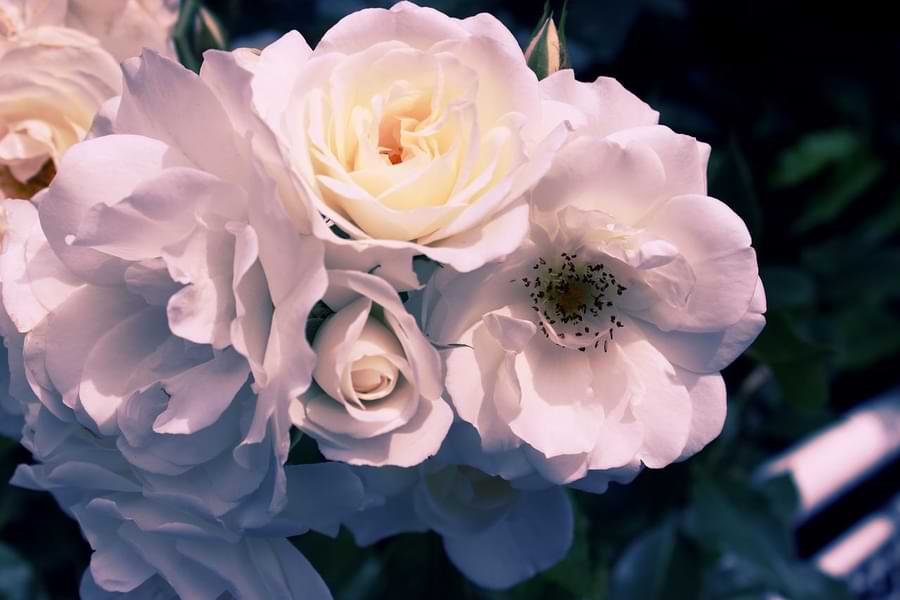
Spread required
For the allowance of width …or spread, roses and gardenias should be kept at an ideal distance of around 3 to 4 feet for proper air and water flow. Many roses like a bit of space to spread out too!
Also, the soil for gardenias should ideally be acidified a bit by adding more compost to it. You can find my list of rose soil and treatments and amendments here.
That is why keeping the roses and gardenias slightly apart should be safe for their proper growth and water and nutrient uptake.
This space allowance is also very important because the roots of gardenias don’t like to compete with other plants, and like to grow at their own pace without fighting.
Gardenia companion options for roses
Here are some great Gardenia options to consider as companions for your roses:
Gardenia Buttons – lower height
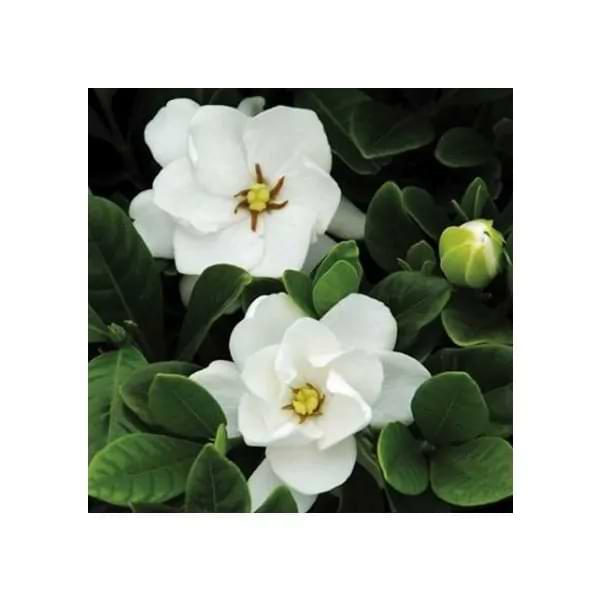
If you’re in zones 8 – 10, then Gardenia buttons work well height-wise for most roses. These smaller white gardenias only grow 1-2 feet tall and can work well as low to mid border layers in front of your roses.
Check availability on Gardenia Buttons (Gardenia jasminoides) ‘Buttons’.
Gardenia August Beauty – late blooming
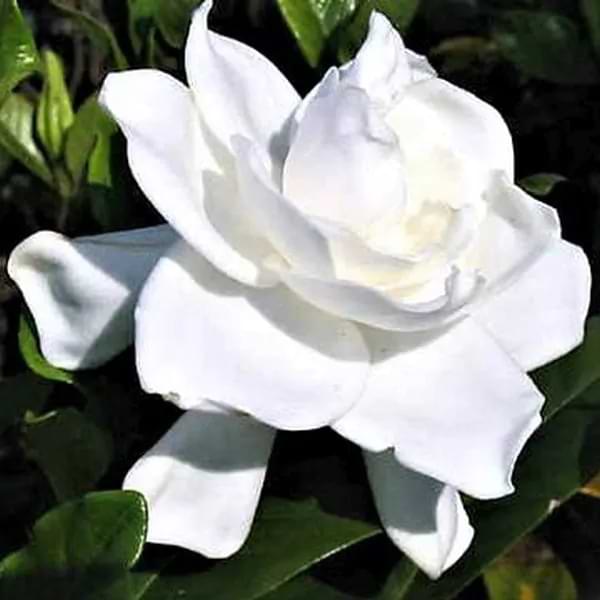
If you’re looking to maintain the flow of color and blooms in your garden then you could consider a Fall blooming gardenia. As your roses begin to wane, your gardenia August beauties will come into full bloom.
Check availability of Gardenia August Beauty
(Gardenia jasminoides) ‘August Beauty.’
Crown Jewel Gardenia – lower growing zones

For growing zones 6 to 7, you might want to consider the Crown Jewel Gardenia. As one of the lower zone companions for roses, these grow in zones 6 and 7.
Check availability of Crown Jewel Gardenia
(Gardenia augusta) ‘Crown Jewel’.
Roses and Gardenias as companion plants ~ More roses help 🌹
I hope this has provided some guidance on planting roses and gardenias together. Be sure to check out my article on Companion plants for roses
Also, check out my page of tools and resources.

Hi, I’m Michael. My passion for roses was sparked a few years ago after visiting a dedicated community rose garden. So Rosehow.com represents my take, my learnings, and my help for anyone looking to grow, be proud of, and harvest roses.
